In an era where visual storytelling dominates social media, Instagram stands tall as one of the most popular platforms for sharing images and videos. However, as much as it’s beloved for its captivating content, it’s also renowned for its insatiable hunger for storage on your device. In this blog, we’ll explore the reasons why Instagram takes up so much space and offer practical tips to manage it effectively. We’ll also walk you through how to check the storage Instagram is using on your phone. So, let’s start!
Reasons Behind Instagram’s Storage
As you venture further into the world of Instagram, it becomes evident that the app’s demand for storage can be significant. This demand arises from various features and functionalities, each playing a role in the overall storage consumption. Instagram consumes a substantial amount of space on your phone, primarily due to its cache.
If you’re not familiar with what cache is, don’t worry; this guide will explain it in easy terms, specifically in the context of Instagram. Other than Instagram Cache, there are other key factors, such as high-quality media files, Instagram conversations, and running an outdated app, that might contribute to storage consumption. Let’s begin by addressing the Instagram cache
- Instagram Cache
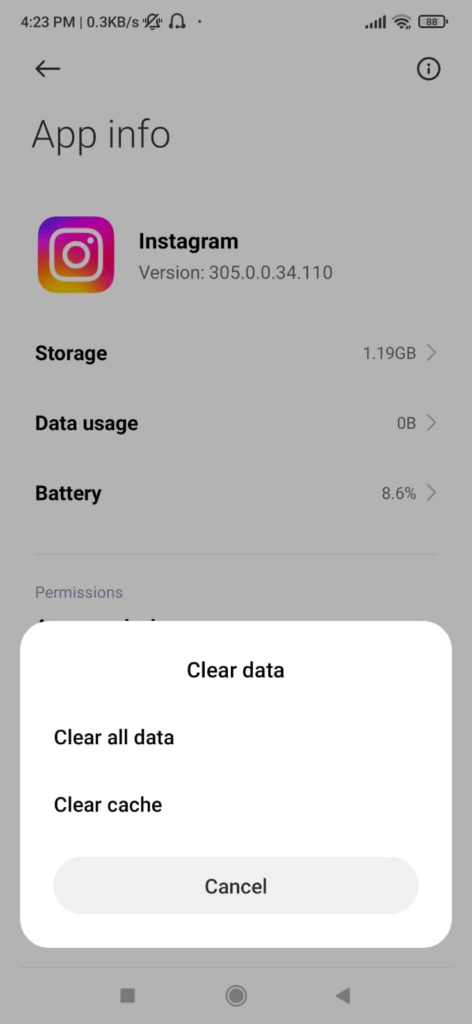
Alright, let’s talk about cache. As you scroll through your feed, Instagram acts like a helpful assistant, saving copies of the pictures and videos you view. This cache, or temporary storage, stays on your phone to speed up loading times for future visits. The more you scroll, the more space it takes up.
Over time, you might notice Instagram taking up more of your phone’s storage. This is because of the growing cache. It’s a smart method to enhance your app experience, saving you from re-downloading the same content every time.
Remember, when you view a post, it’s initially downloaded to your phone, creating the cache. Instagram keeps these copies on your device. So, the more you browse, the larger the cache becomes.
If you don’t clear this cache from time to time, you might start receiving messages about your phone running out of space. So, it’s good practice to give it a clean-up occasionally. This way, you ensure your Instagram experience remains smooth and clutter-free. Let’s move on to the next reason.Â
- High-Quality Media Files

Instagram’s high-quality media files are all about your visual enjoyment. These photos and videos are stored and displayed at resolutions that guarantee the best viewing quality. When you upload an image or video to Instagram, it maintains a high level of detail and clarity, creating a visually pleasing experience for you and your viewers.
But here’s the catch: these high-quality files come in larger sizes. While it enhances your visual experience, it also means your phone’s storage gets eaten up faster. So, as you enjoy those stunning photos and videos on Instagram, be prepared for them to take up a significant chunk of your device’s storage. It’s the price you pay for top-notch visual content.
- Offline Media Storage
Now, let’s talk about how you benefit from Instagram’s offline media storage feature. Because of this feature, you have the power to save posts and view them later, even when you don’t have an internet connection. This comes in handy, especially if you have a limited data plan or if you find yourself in an area with a weak internet signal.
But here’s the thing to keep in mind: when you save these posts for offline viewing, the app actually downloads and stores them on your phone or device. This ensures that you can access them without needing the internet. However, it also means that you need to allocate some space on your device to keep these posts ready.
So, while it’s an incredibly useful feature, it’s crucial to be mindful of the extra space it might occupy on your device. It’s all about finding the right balance between having your favorite content readily available and managing your device’s storage efficiently.Â
- Messages and Conversations
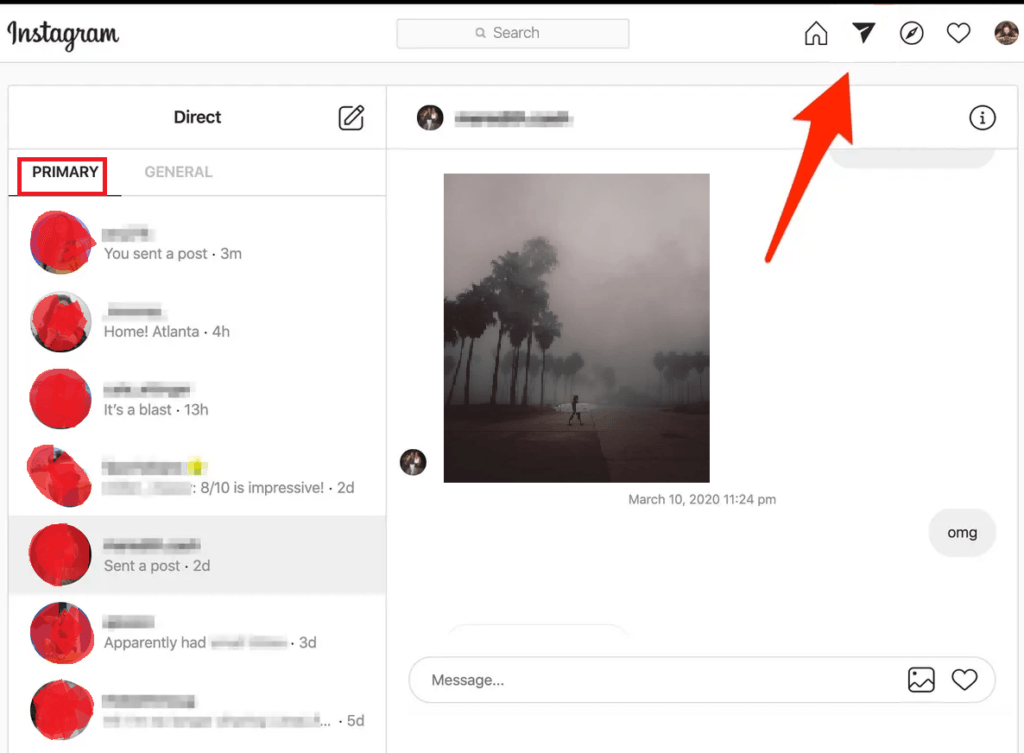
Moving on to reason 4, which is Instagram Direct, it is a vital aspect of the app, serving as your primary space for sending and receiving messages with other users. However, it’s important to note that when you exchange pictures, videos, or any other media in these messages, they automatically get saved on your device.
While this feature is incredibly convenient for staying in touch with friends, it does come with a storage cost. Every piece of media you share or receive contributes to the total amount of space that the Instagram app occupies on your phone or device. So, as you engage in conversations and share moments with others, it’s wise to be aware that it can gradually use up some of your device’s storage.
Remember, keeping an eye on these storage-consuming aspects can help you manage your device’s space more effectively, ensuring you have enough room for all the things that matter to you.Â
- App Updates and Improvements
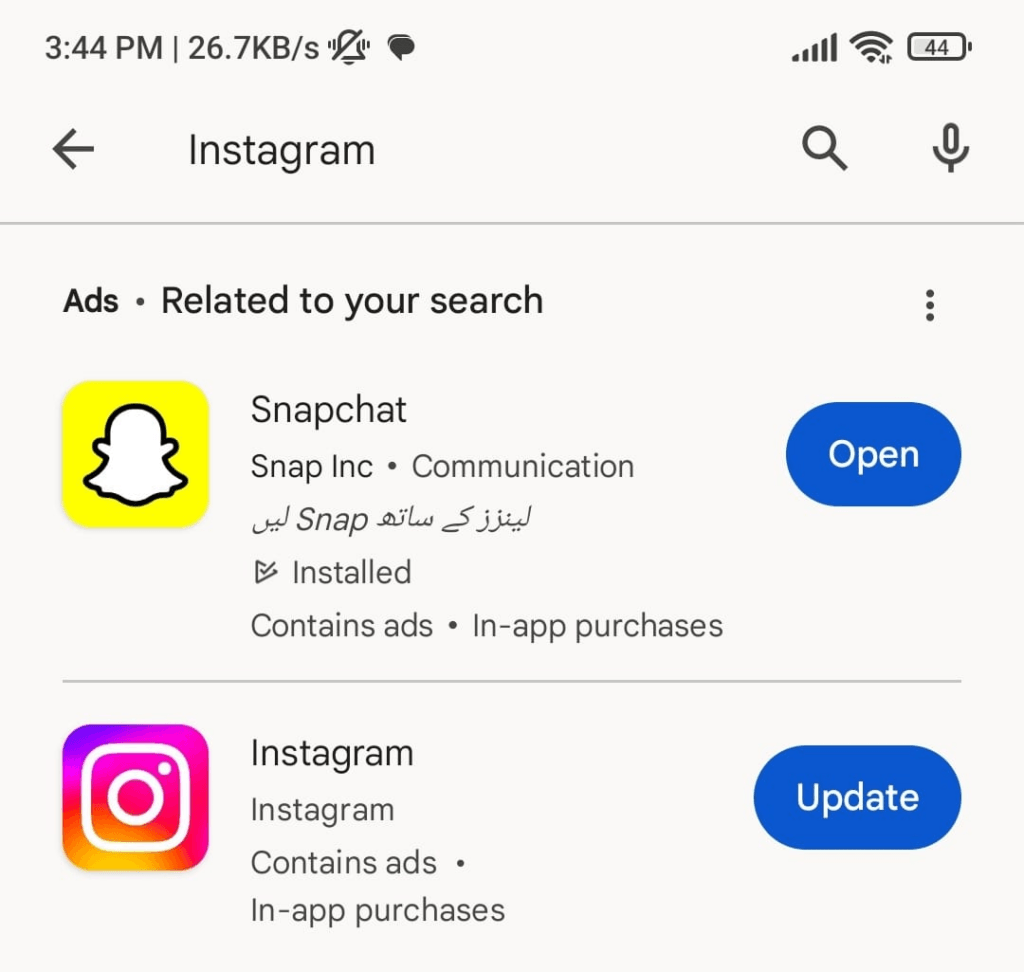
Instagram, like most software applications, undergoes regular updates and improvements. These updates serve various purposes, including introducing new features, addressing bugs, and enhancing overall performance. It’s important to keep your Instagram app updated to ensure you have access to the latest functionalities and a smooth user experience.
How To Check Instagram StorageÂ
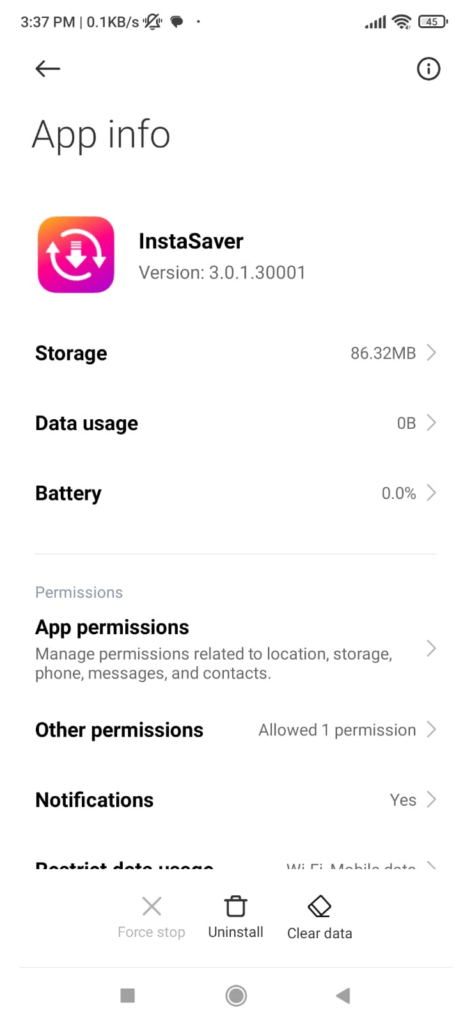
Now that you’re aware of what can potentially take up space on your Instagram let’s guide you on how to check exactly how much storage it’s using on your device.
- Checking Instagram Space on Android
Step 1: Open the “Settings†app on your Android device.
Step 2: Find and select “Applications†or “Apps.â€
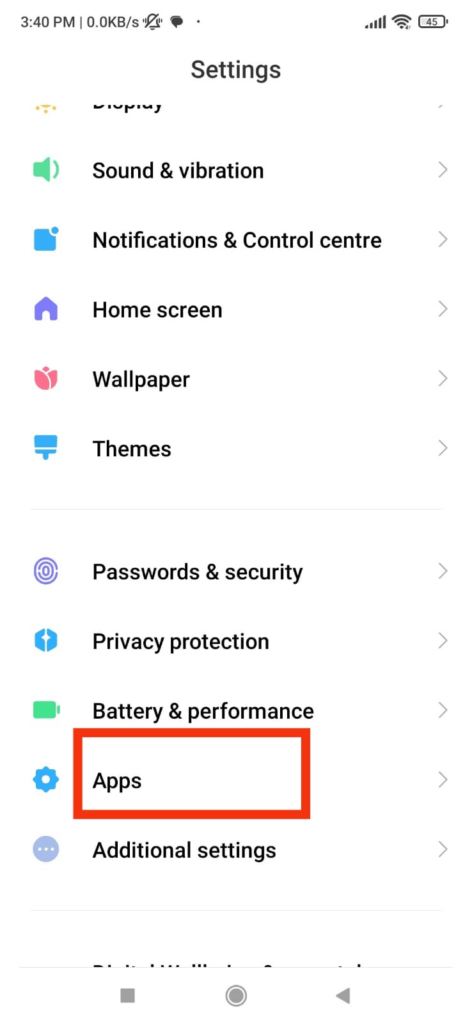
Step 3: Tap on “Manage apps†on the next screen.
Step 4: A list of apps will appear. Look for and tap on “Instagram.â€

On the screen, you’ll see Instagram’s total space usage.
- Checking Instagram Space on iOS
Step 1: Launch the “Settings†app on your iPhone.
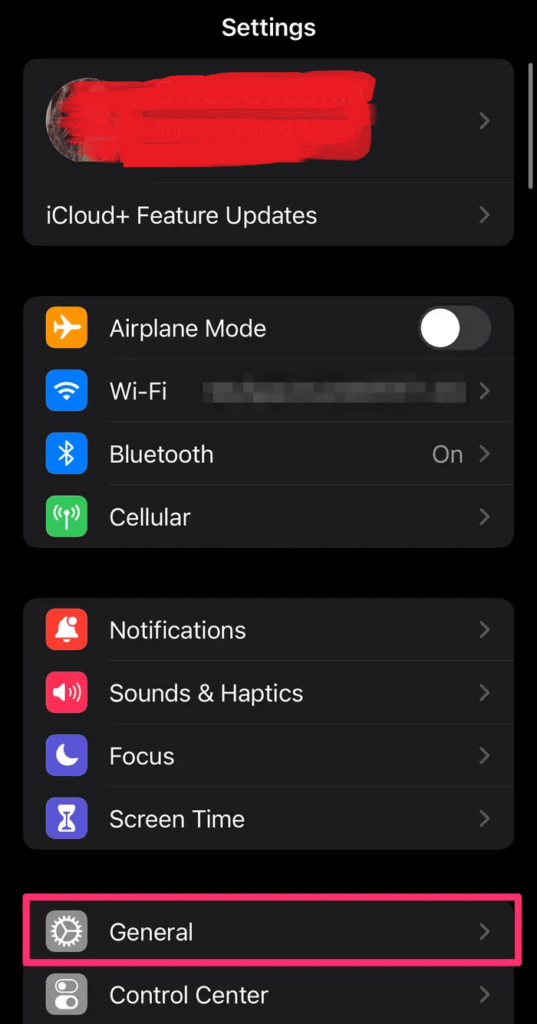
Step 2: Navigate to “Generalâ€Â
Step 3: Tap on “iPhone Storage.â€

You can view the storage requirements of various apps on your iPhone, including Instagram.
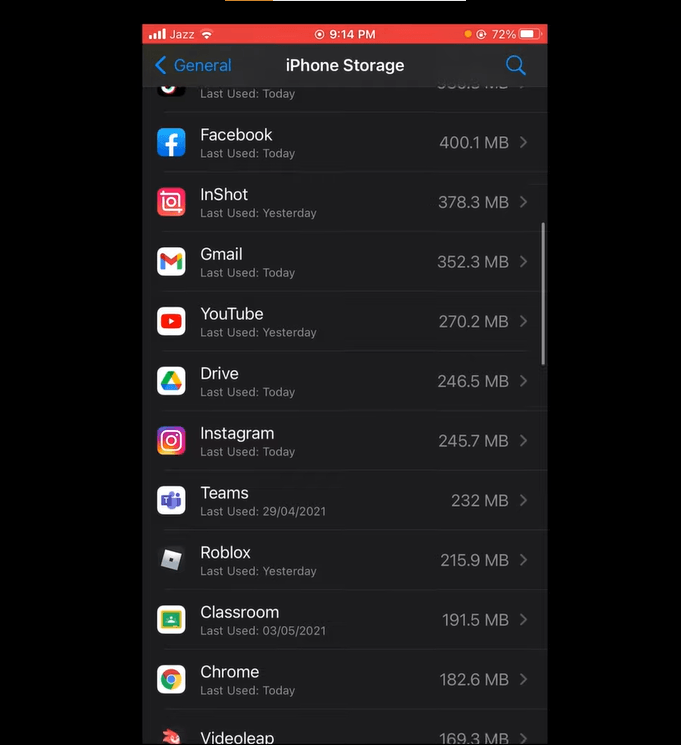
How to Resolve Instagram’s Space Issue?
Now that you understand the reasons behind Instagram’s storage consumption and how much space the app has taken up on your mobile device, let’s move on to resolving these issues. We’ll start with addressing the cache problem.
Clearing the Instagram Cache
Here’s how iOS users can do it:Â
Step 1: Open the Settings on your device.
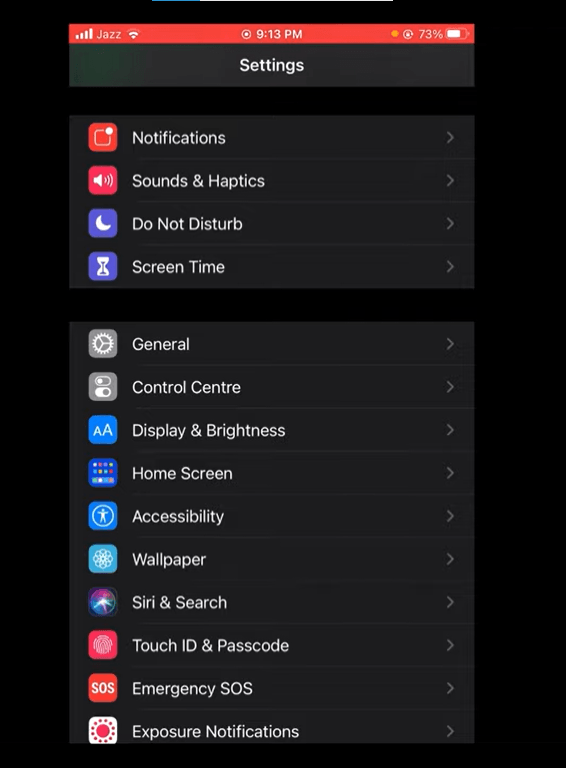
Step 2: Scroll down and tap Instagram.
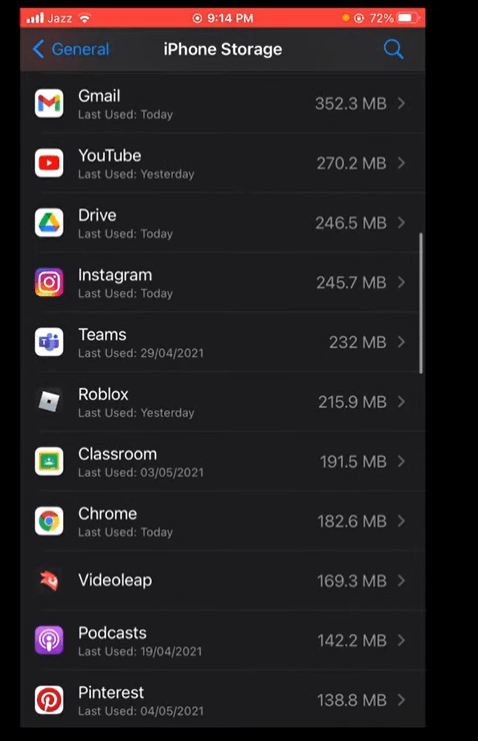
Step 3: Tap on “Offload app†or “Clear App Storage.â€
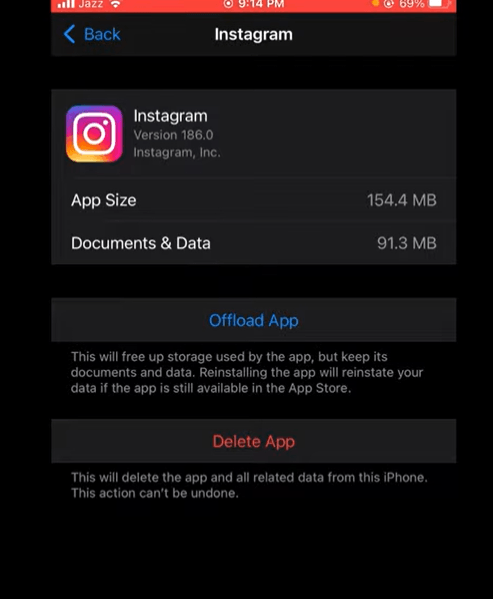
Step 4: Confirm the action if prompted.
Android users should follow the below steps:Â
Step 1: Open the Settings app on your device.
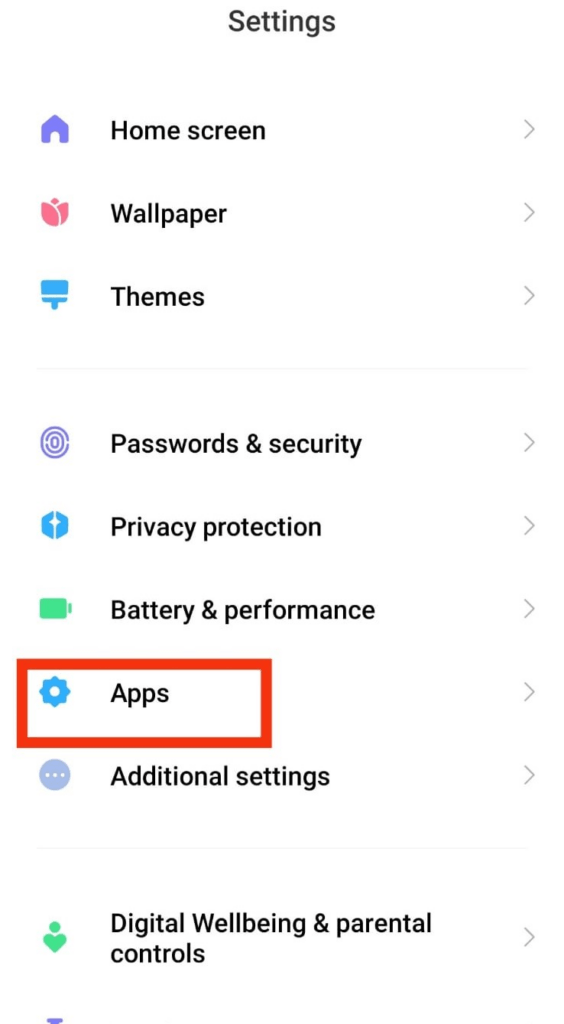
Step 2: Scroll down and tap on “Apps†or “Application Manager,†depending on your device.
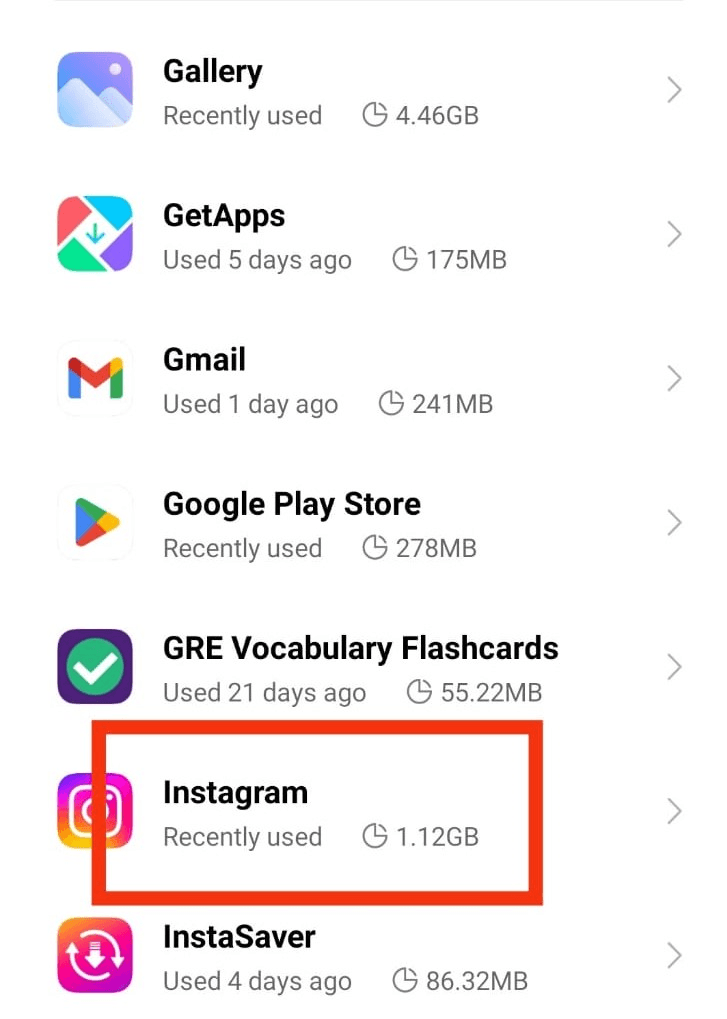
Step 3: Find and select Instagram from the list of apps.
Step 4: Tap on “Storage.â€
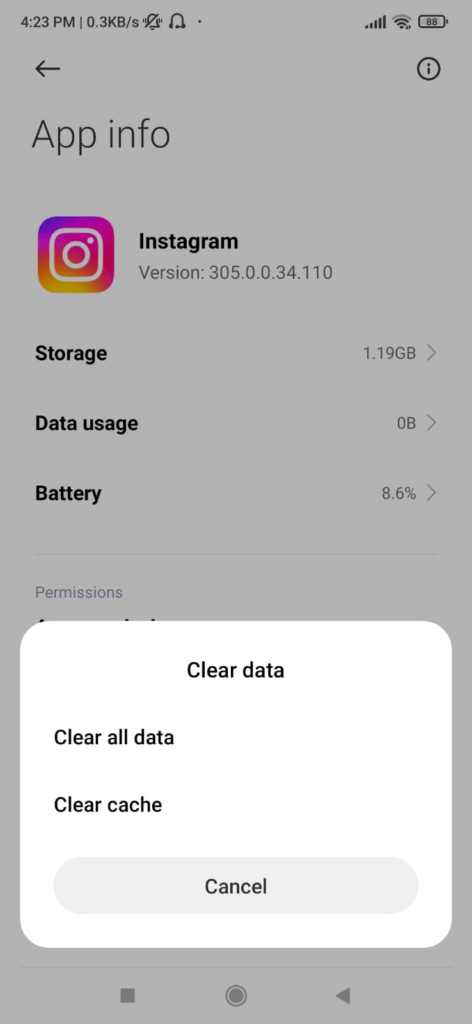
Step 5: Tap on “Clear Cache.â€
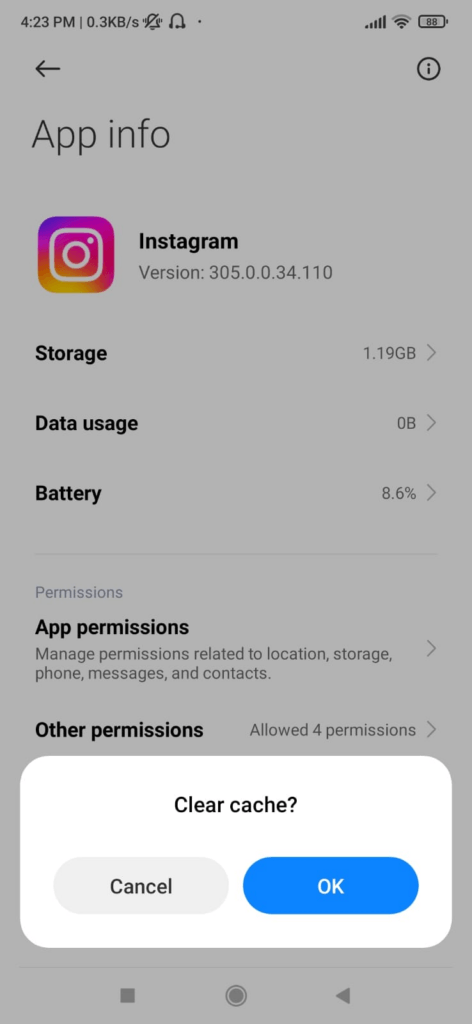
If you’re unable to find the exact options, you can refer to your device’s user manual or perform a quick internet search with your device model and “clear cache†for specific instructions. Now, let’s move on to the second one.
How To Resolve High-Quality Media Files Issue
Here are the step-by-step instructions that you can follow to disable high-quality media files on Instagram to minimize storage. Note that the disabling process is the same for both Android and iPhone users.Â
Step 1: Open Settings
Locate and tap the “Settings†app on your Android device.Â
Step 2: Select Storage
Scroll down and tap on “Data Usage and Media Quality†in the list of options.
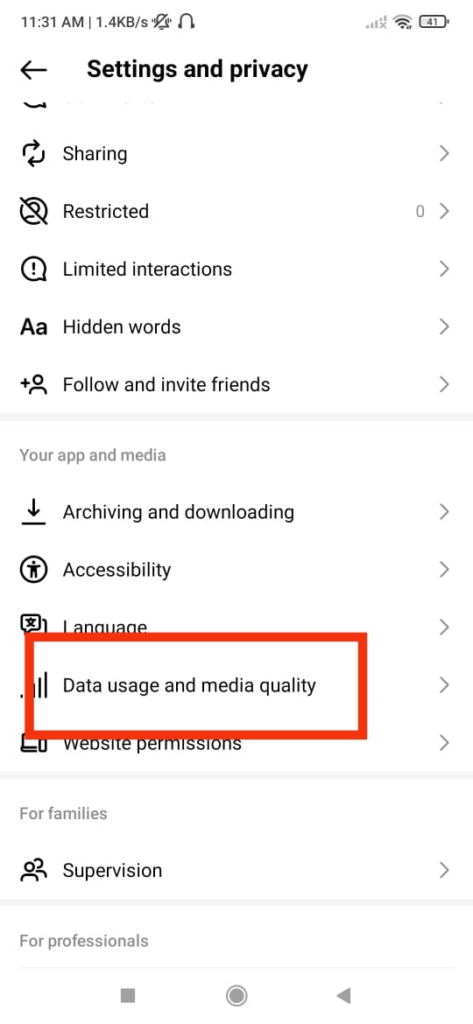
Step 3: Disable Upload at High Quality
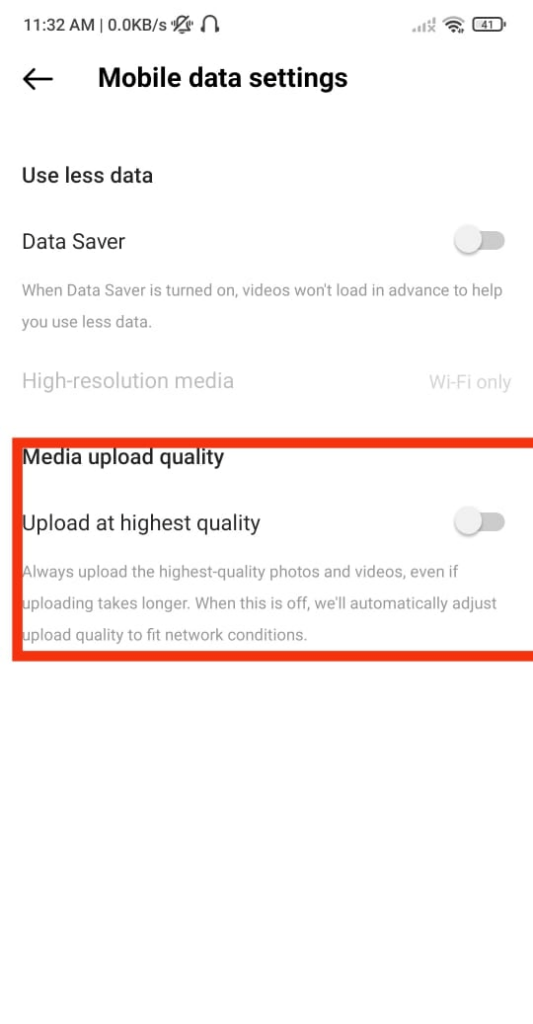
By enabling this setting, your Android device will automatically manage and optimize storage by removing unnecessary files and storing lower-resolution versions of media, freeing up valuable space. This ensures you can still access high-quality media when needed.
How To Limit Offline Media On InstagramÂ
Here’s a step-by-step guide to limiting your offline media on Instagram:
Step 1: Open Instagram
Launch the Instagram app on your device.
Step 2: Access Saved Posts
Tap on your profile icon at the bottom right corner to go to your profile.

Step 3: Open Saved
Tap the three horizontal lines (menu) at the top right corner.

Step 4: Select Saved
From the menu, choose “Saved.†This will show you all the posts you’ve saved for offline viewing.
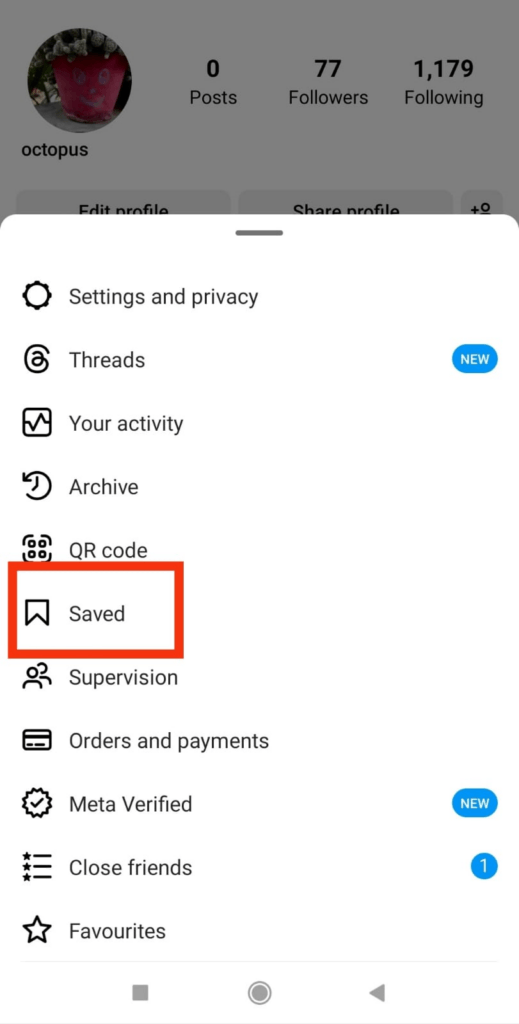
Step 5: Review Saved Media
Go through the list of saved posts and identify the ones you no longer need for offline viewing.

Step 6: Delete Unnecessary Posts
For each post you want to remove, tap on it to open it.
Step 7: Unsave the Post
Tap the bookmark icon (which represents saving) below the post. This will unsave the post and remove it from your offline media.

Step 8: Confirm the Action:
You may be prompted to confirm that you want to unsave the post. Confirm the action.
By following these steps, you can actively manage and limit the accumulation of offline media on Instagram. This ensures that you only keep the posts you truly want to have available for offline viewing.
How To Clear Unnecessary Conversations
Here is a step-by-step guide on how to do it:
Step 1: Open Instagram and go to Direct Messages.

Step 2: Select the conversation you want to clear.
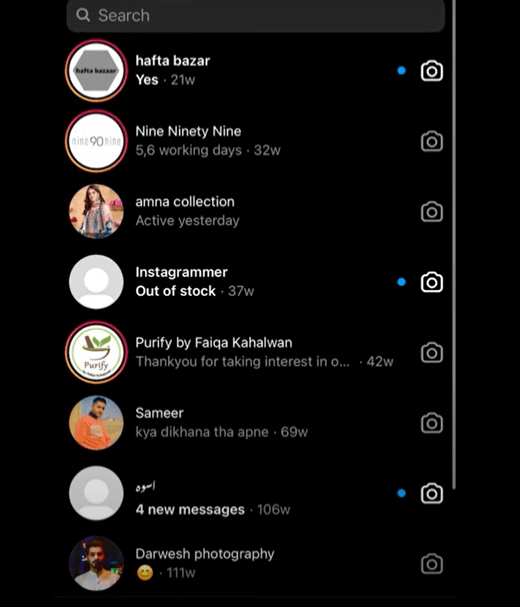
Step 3: Tap and hold on to a message to delete it.
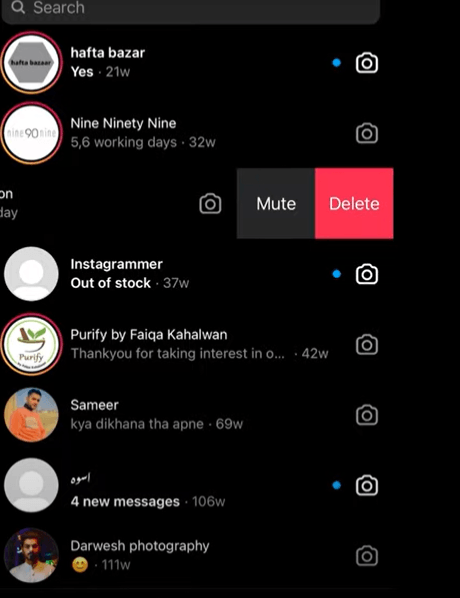
Step 4: For entire conversations, tap the three dots and choose “Delete Chat.â€
By following these steps, you can quickly clear unnecessary conversations and media from Instagram Direct to free up storage space on your device.
How To Update Instagram AppÂ
Here’s a short guide for you on how to do it:
iPhone users can follow the below steps:Â
Step 1: Open the App Store on your device.
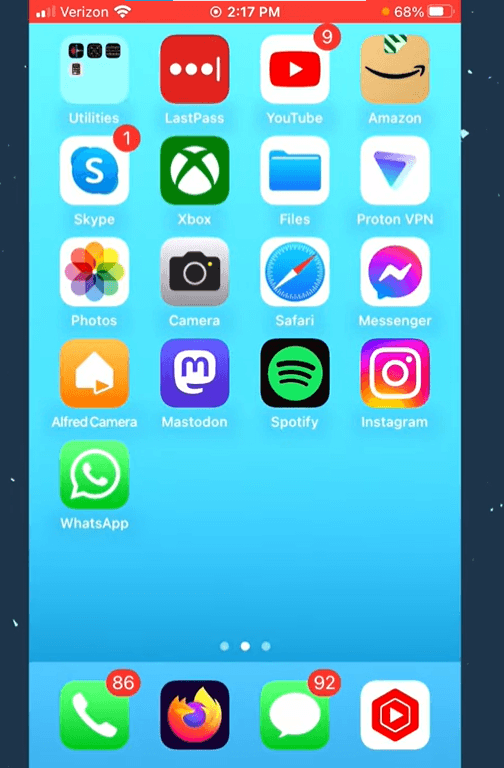
Step 2: Tap on your profile icon in the top right corner.
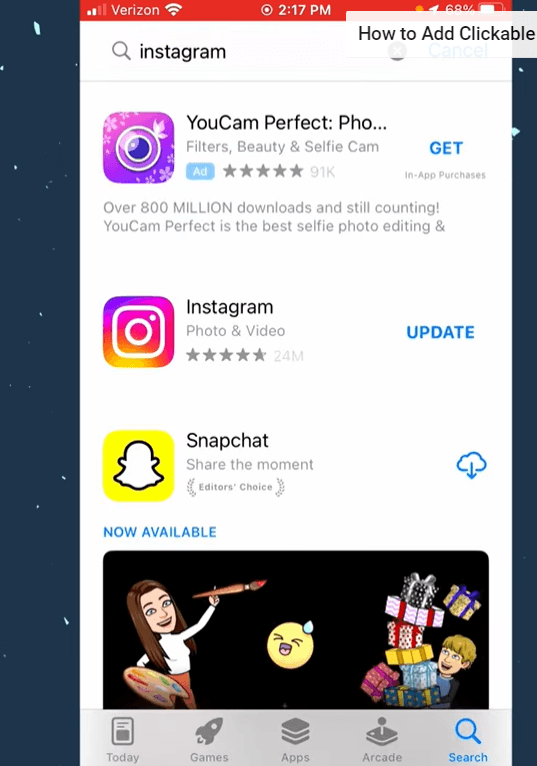
Step 3: Scroll down to see the list of available updates.
Step 4: Find Instagram and tap “Update†next to it, or tap “Update All†to update all your apps at once.
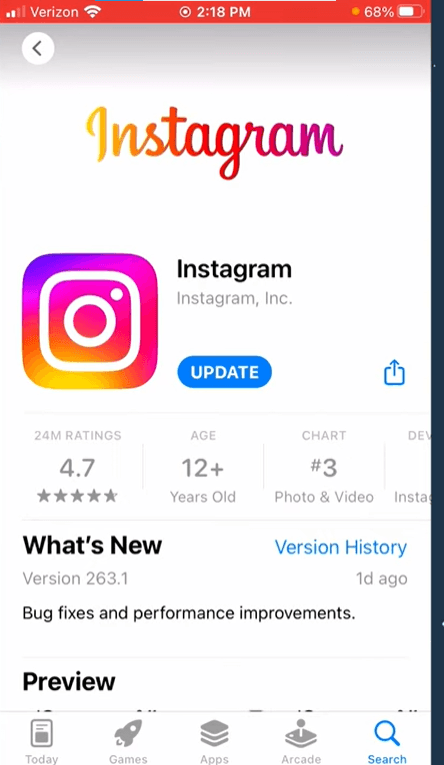
Android users follow the below instructions:Â
Step 1: Open the Google Play Store on your device.
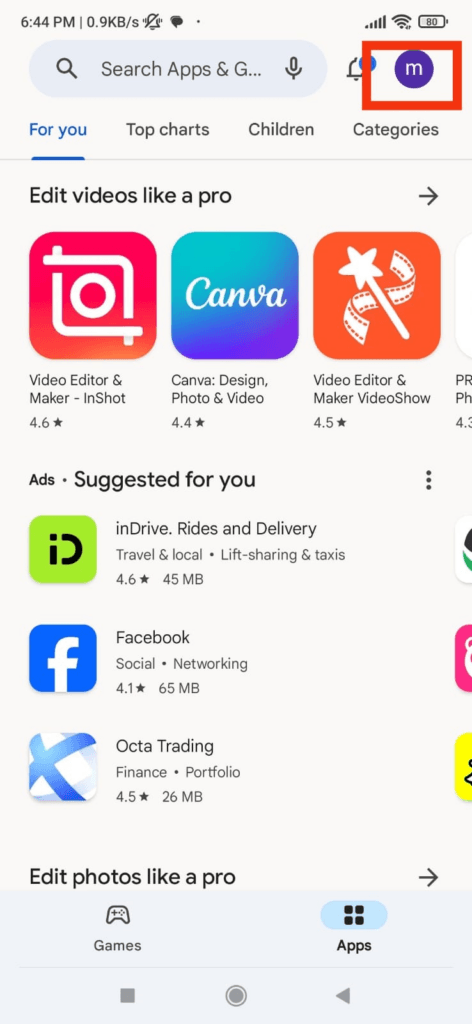
Step 2: Tap the email name initial (menu) in the top left corner.
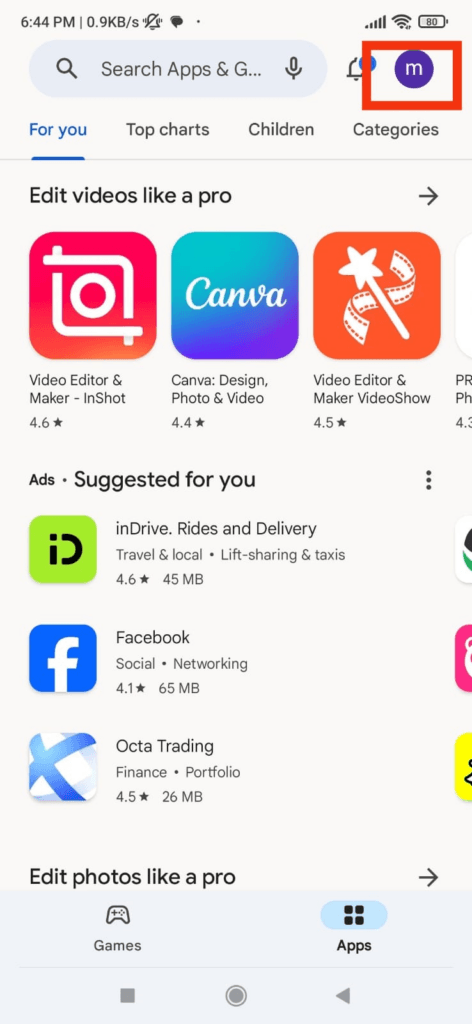
Step 3: Select “Manage apps & device.â€
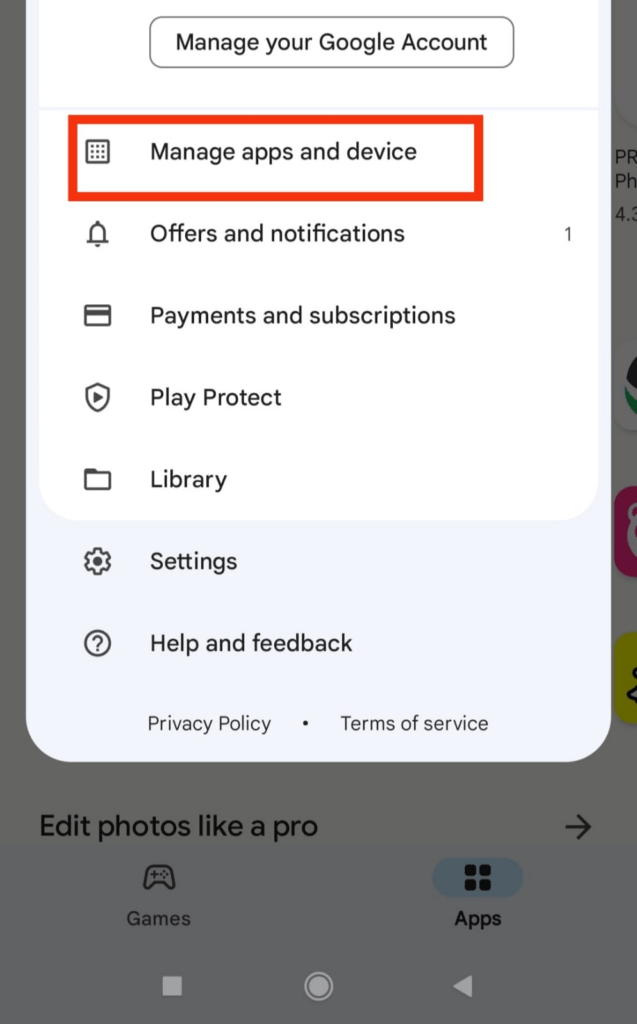
Step 4: Find Instagram in the list of apps with available updates and tap “Update.â€
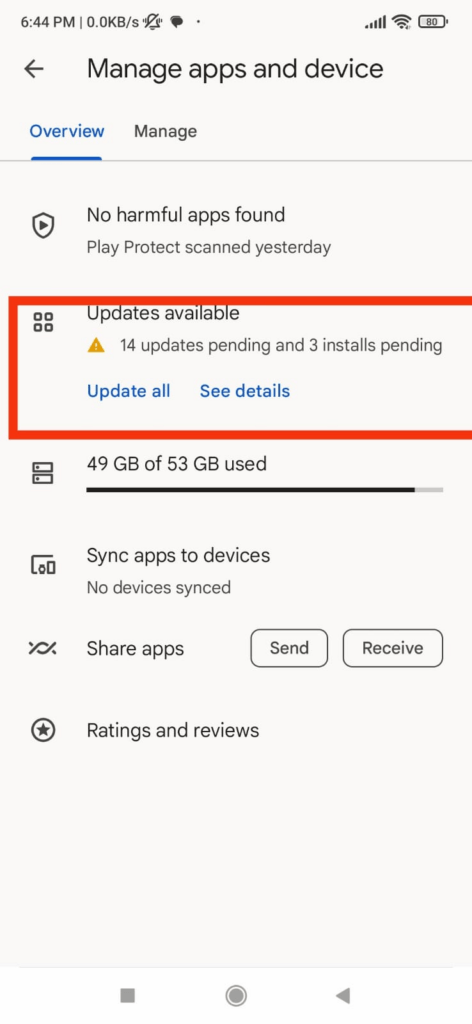
By regularly updating your Instagram app, you ensure that you have the latest features and optimizations, including those that may help manage storage more efficiently.Â
ConclusionÂ
Instagram’s storage consumption is primarily a result of its commitment to providing high-quality visual content to users. By understanding how the app uses storage and implementing effective management strategies, you can continue to enjoy the platform without compromising your device’s storage capacity. Remember, a little regular maintenance can go a long way in keeping your device clutter-free and ready for more Instagram-worthy moments.
FAQs
Q: What is the ‘Optimize iPhone Storage’ option?
A: It stores lower-resolution media on your device, saving space while keeping high-resolution files in iCloud for access.
Q: Is it possible to limit offline media storage?
A: Yes, by regularly reviewing and deleting saved media, you can prevent it from accumulating and taking up excessive space.
Q: Are there benefits to keeping Instagram updated?
A: Yes, updates introduce new features and optimize storage usage, enhancing the app’s overall performance.
best live webcam,4k pc camera,web cam 4k
Guangdong ZhiPing Touch Technology Co., Ltd. , https://www.zhipingtouch.com